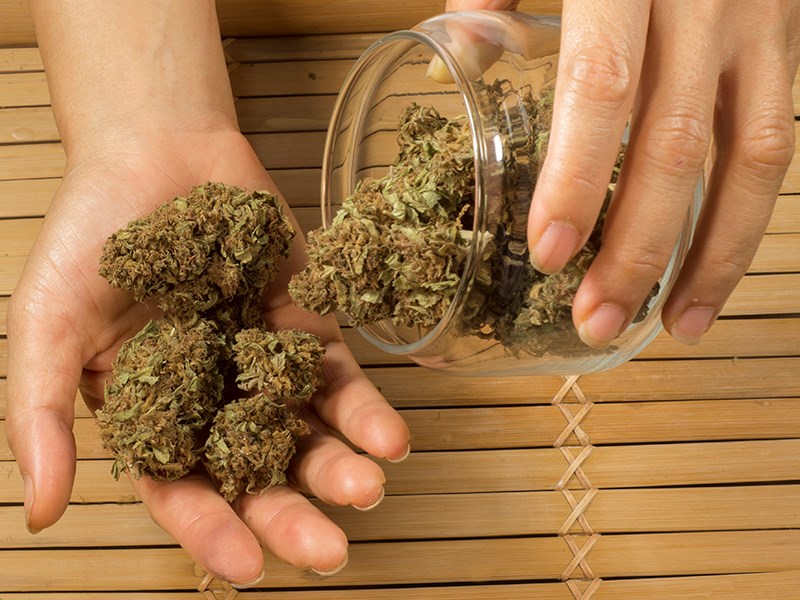As Canada inches closer to legalized marijuana, safety standards for dispensary-sold medical cannabis are being brought under greater scrutiny.
In an investigation done by The Globe and Mail in August, one third of medical marijuana samples collected from Toronto area dispensaries showed the presence of chemicals and mould that could cause a variety of illnesses in users, such as lung infections, particularly in patients with compromised immune systems.
One of the Toronto dispensaries whose product failed that test was WeeMedical, a chain that also operates in Powell River on Marine Avenue.
While licensed producers can test their products and have been required to, dispensaries are not able to because product testing is currently illegal for them.
Canadian Association of Medical Cannabis Dispensaries director Dieter MacPherson said Health Canada’s mandate is to promote health, so allowing for testing of unlicensed medical cannabis should be allowed.
“Allowing for testing does nothing but provide for increased public safety,” said MacPherson. “There’s no negative downside.”
MacPherson said the reality is 350,000 Canadians access dispensaries each year already, compared to 82,000 Canadians who purchase medical cannabis through the federal government’s producers.
Dan Clarke, operator of Grassroots Botanicals Cooperative, one of two current dispensaries in Powell River, said quality control at his business is more in line with farmers’ markets than pharmacies.
Clarke said he would like to see more testing done, but in the meantime he is relying on the relationship he has with his growers and his experience with marijuana to guide him.
“There are no guidelines for dispensaries at all,” said Clarke. “Everyone is doing what they feel is right.”
Clarke explained the current supply for much of what is sold in dispensaries comes from individual growers who are licensed to provide medical cannabis for a patient registered under Health Canada’s now-defunct Marihuana Medical Access Regulations (MMAR).
Producers grow more than their patients will buy and are required to destroy the excess, but often they do not, he said.
Clarke was not able to divulge information about who his producers are, but he said that “there are several in Powell River” and he takes only a small percentage of what they grow.
He estimated that the majority of the remaining product ends up in Vancouver dispensaries or in other Canadian cities.
Clarke is able to vouch for the product sold at Grassroots because he has knowledge of where and how the cannabis is produced, he said.
Clarke said his relationship with his growers is similar to the one someone may develop with farmers who sell produce directly at weekend markets. He admitted it could be harder to do for dispensaries in other parts of the country.
Clarke said he uses a microscope to check cannabis coming in for moulds and other visible problems. If dispensaries had access to laboratory testing, it may help to improve the quality of the product across the board, he added.
Although dispensaries are currently unable to have medical cannabis tested in a licensed laboratory, licensed producers are. Testing is expensive, particularly if it is only on a small amount. Tests for mould, fungus, bacteria and other chemicals such as pesticides costs approximately $450, said Clarke.
Vancouver Coastal Health medical health officer for Powell River Paul Martiquet said consumers of dispensary-sold medical cannabis would do well to develop relationships with dispensary staff to better understand where the marijuana comes from and ask questions about how it was grown and what chemical fertilizers or fungicides, if any, were used in its production.
“This goes without saying, but it’s really a case of buyer beware,” said Martiquet. “These are all questions any buyer should be asking of the person providing it.”
Martiquet added that another problem with a lack of testing is unknown information about the concentration of tetrahydrocannabinol (THC) in dispensary products such as dried cannabis or other cannabis-based edibles.
“It would be nice if it were labelled in terms of the percentage of the THC and cannabinoids in it,” he said. “That gives the buyer foreknowledge of what they can expect and what to look for.”
Martiquet said knowledge and predictability of the marijuana products could help people take the right amount.
“That’s why we’re coming down heavy on edibles,” he said. “We believe that products are basically not measured in terms of their dosage, so people who consume edibles are not really sure what they are going to get.”
MacPherson said he agrees with the health authority. “The more information for the consumer,” he said, “the better.”



